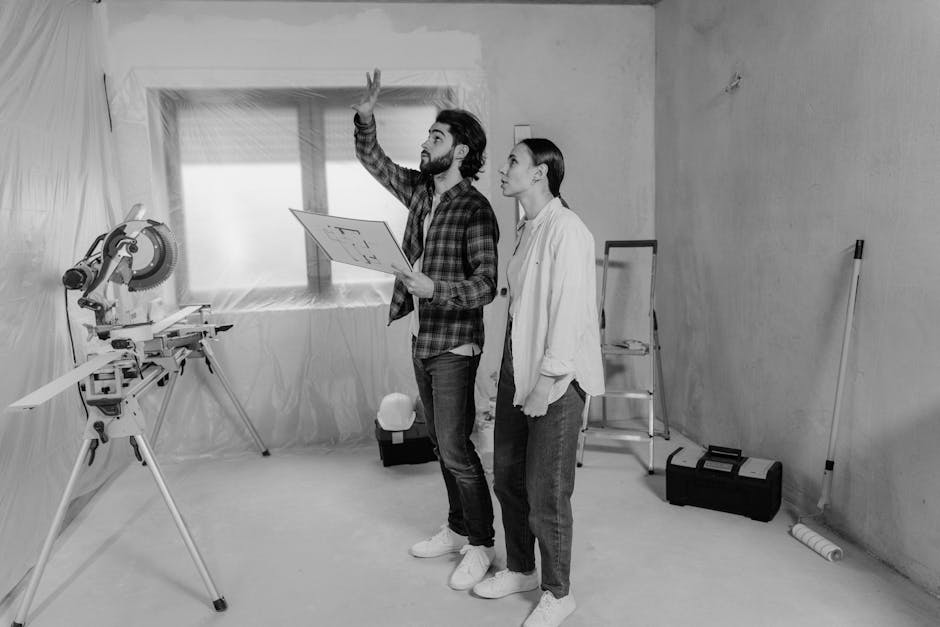Home. Its supposed to be a haven. A refuge from the overwhelming chaos outside. But what happens when the home itself becomes a source of distress? For families with members experiencing sensory processing differences, common household elements can become amplified, creating constant unease and anxiety. Bright, artificial lighting might feel like an interrogation lamp. Certain textures can evoke sensations of nails scraping down a chalkboard. The echo of footsteps in a hallway might be perceived as a thunderous roar. This isn’t just about being “picky”. It is about neurological differences which shape the way the world is experianced. Sensory sensitivities, sensory defensiveness, and sensory seeking behaviors demand a new approach to dwelling. A remodeling approach that prioritizes calm, comfort, and functionality, not just aesthetics.
The Soundscape of Serenity
Sound. It's everywhere. And for sensitive ears, too much of it can be incredibly draining. Open floor plans, popular in modern design, can unfortunately become echo chambers. Hard surfaces like tile and hardwood reflect sound, intensifying noise. Think about strategically incorporating materials that absorb sound instead. Rugs, especially thick pile rugs, can make a huge difference. Consider acoustic panels disguised as artwork. Curtains, particularly heavy, lined curtains, can dampen street noise. Even furniture choices play a role, with upholstered pieces generally absorbing more sound than hard, wooden furniture. The goal isn't complete silence, which can feel sterile and isolating. It's about creating a balanced soundscape where sounds are softened and reverberation is minimized. Think also about appliances and their noises. Are there quieter options for the dishwasher or washing machine? Little changes in appliance choice can lead to drastic quality of life improvements.
Lighting that soothes, not Stings
Lighting is another critical area to address. Harsh fluorescent lighting is a common trigger. It is important to consider the color temperature of the light, as well as the intensity. Softer, warmer light, similar to natural sunlight, is often preferred. Incandescent bulbs can be too hot, and can be a fire hazard. LED bulbs offer a wide range of color temperatures and are energy-efficient, though some can still emit a harsh glare. Dimmers are your friend! Being able to adjust the light intensity allows for personalized comfort. Consider layering lighting. Combine ambient lighting, task lighting, and accent lighting to create a more balanced and flexible environment. Avoid placing light sources directly in the line of sight. Diffusers and lampshades can soften the light and reduce glare. Natural light is often the best option, but control is important. Blackout curtains or shades can block out unwanted sunlight when needed. Think about the purpose of the light, as well. A reading corner might need brighter, more focused light than a bedroom intended for relaxation. Light therapy lamps might also be helpful, but should be used in consultation with a healthcare professional.
The Tactile Terrain
Texture matters. A lot. What feels comforting to one person might feel abrasive or irritating to another. The key is to provide options and avoid extremes. Think about natural materials like wood, cotton, and linen. These materials tend to be softer and more forgiving than synthetic materials. Avoid rough or scratchy fabrics. Consider the texture of paint. Some paints have a smoother finish than others. Think about the feel of flooring. Carpet can be soft and comforting, but it can also trap allergens. Hardwood floors are easier to clean, but they can be cold and hard underfoot. Consider using area rugs to add softness and warmth. Pay attention to details like doorknobs and drawer pulls. Are they easy to grip? Do they have any sharp edges? Simple changes can make a big difference in comfort and usability. And also think about underfoot. Some people prefer the feel of carpet beneath their feet, while others prefer something cold and hard, like tile or stone. This too, must be considered.
Spatial Considerations
The layout of a home can also impact sensory processing. Open floor plans, while popular, can be overwhelming for some individuals. Creating smaller, more defined spaces can provide a sense of security and control. Consider using furniture or screens to create visual barriers and break up large spaces. Think about creating a "safe space" – a quiet, comfortable area where a person can retreat when feeling overwhelmed. This space should be free from distractions and filled with calming elements like soft lighting, comfortable seating, and favorite sensory items. Minimize clutter! A cluttered environment can be visually overwhelming and can contribute to feelings of anxiety. Storage solutions are essential. Having a place for everything helps to keep things organized and tidy. And while minimalism can be helpful, avoid creating a sterile or uninviting environment. It's about finding a balance between simplicity and comfort.
Color Psychology
Color can have a profound impact on mood and emotions. Calming colors like blues, greens, and grays are often preferred for individuals with sensory sensitivities. Avoid bright, intense colors like reds, yellows, and oranges, which can be overstimulating. However, personal preferences should always be taken into account. What one person finds calming, another might find depressing. Consider using color in subtle ways. Paint walls in neutral colors and add pops of color with accessories like pillows, artwork, and rugs. This allows for flexibility and easy changes.
The Scented Sanctuary
Smell is often overlooked, but it can be a powerful sensory trigger. Avoid strong perfumes and artificial fragrances. Opt for natural scents like essential oils, but use them sparingly. Some essential oils, like lavender and chamomile, are known for their calming properties. However, it's important to be aware of individual sensitivities. What smells pleasant to one person might be irritating to another. Consider using an air purifier to remove allergens and odors from the air. Good ventilation is also essential. Open windows and doors to allow fresh air to circulate.
Beyond the Basics: Adaptive Technologies and Universal Design
Consider incorporating adaptive technologies and universal design principles. Universal design aims to create environments that are accessible and usable by people of all abilities. This includes features like wider doorways, ramps, and grab bars. Adaptive technologies can further enhance comfort and independence. For example, automatic lighting controls can eliminate the need to fumble for light switches. Voice-activated assistants can control appliances and other devices. The goal is to create a home that is not only comfortable but also functional and supportive. Think about future needs. Remodeling is an investment, so it's important to consider how your needs might change over time. Designing for flexibility and adaptability ensures that your home will continue to meet your needs for years to come.
Ultimately, creating a sensory-friendly home is a deeply personal process. It requires careful consideration of individual needs and preferences. It's about creating a space that is not only visually appealing but also calming, comfortable, and supportive. With thoughtful planning and attention to detail, it is possible to transform a house into a true sanctuary for everyone. This might involve consulting with occupational therapists, sensory integration specialists, or interior designers who specialize in creating sensory-friendly environments. It may seem daunting, but the reward – a calmer, happier, and more functional home – is well worth the effort. Also, families should consider the fact that sensitivities change over time. A child's sensitivities might shift as they develop, and an adult's might change due to aging or illness. Regular assessments are needed to adapt living spaces.
Remodeling for sensory processing challenges is not a one-size-fits-all solution. It needs a holistic and individualized approach, focusing on creating environments that cater to the unique needs of each person and family. The key is in understanding, empathy, and proactive design that supports a calmer, more regulated life within the home.







